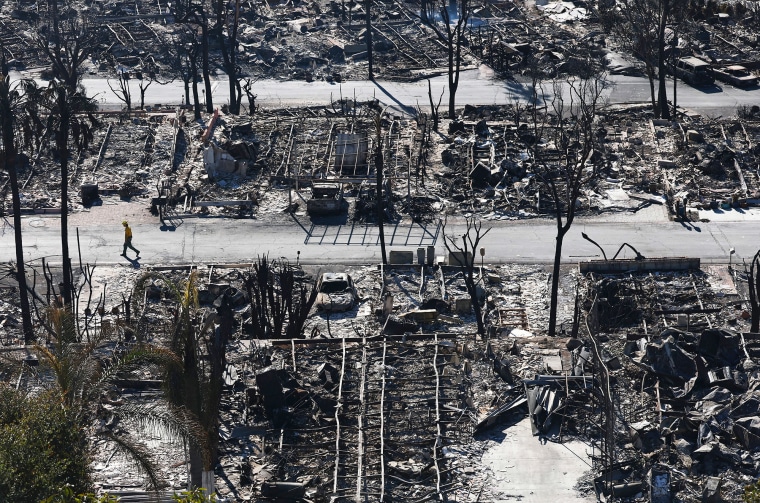Climate change increased the likelihood of the extreme conditions that allowed the recent fires to roar across the Los Angeles area, an international group of scientists said Tuesday.
The hot, dry and windy conditions that preceded the fires were about 35% more likely because of human-caused global warming, according to a new report from the World Weather Attribution group, which analyzes the influence of global warming on extreme events.
The fires, which started during a ferocious windstorm and after almost no rain had fallen in greater Los Angeles since the spring, have killed at least 29 people and torched more than 16,000 buildings, including homes, stores and schools.
“This was a perfect storm when it comes to conditions for fire disasters — the ingredients in terms of the climate enabling, the weather driving the fires and the huge built environment right downwind from where these ignitions occurred,” John Abatzoglou, a professor of climatology at the University of California, Merced, who contributed to the report, said at a news conference.
Compared to a preindustrial time before fossil fuels were widely used, there are now 23 extra days of “dry season” on average each year in the Los Angeles region, the report said, making it more likely that fires will coincide with seasonal Santa Ana winds.
Park Williams, a professor of geography at UCLA and an author of the report, said fires during cool seasons in Southern California require four conditions: widespread grass or brush that can burn, abnormally dry conditions, an ignition (which almost always comes from a person; and extreme weather, like the recent windstorm. He described each of those conditions as an individual switch in a system that requires all four to be flipped on for light to emanate.
“The artificial warming due to human-caused climate change is making the light brighter,” Williams said.
The authors of the report analyzed weather and climate models to evaluate how a warmer atmosphere is shifting the likelihood of fire weather (meaning conditions that increase the risk of wildfire). They also tracked how a metric called the Fire Weather Index changed over time. The index tracks temperature, relative humidity and wind speeds, all factors that contribute to the likelihood of fire.
The researchers found that the kind of conditions that drove the L.A. area fires are expected to occur on average once in 17 years in today’s climate. Such conditions would have been expected once every 23 years without climate change and would have been less extreme when they did occur, the report says.


대화 참여하기